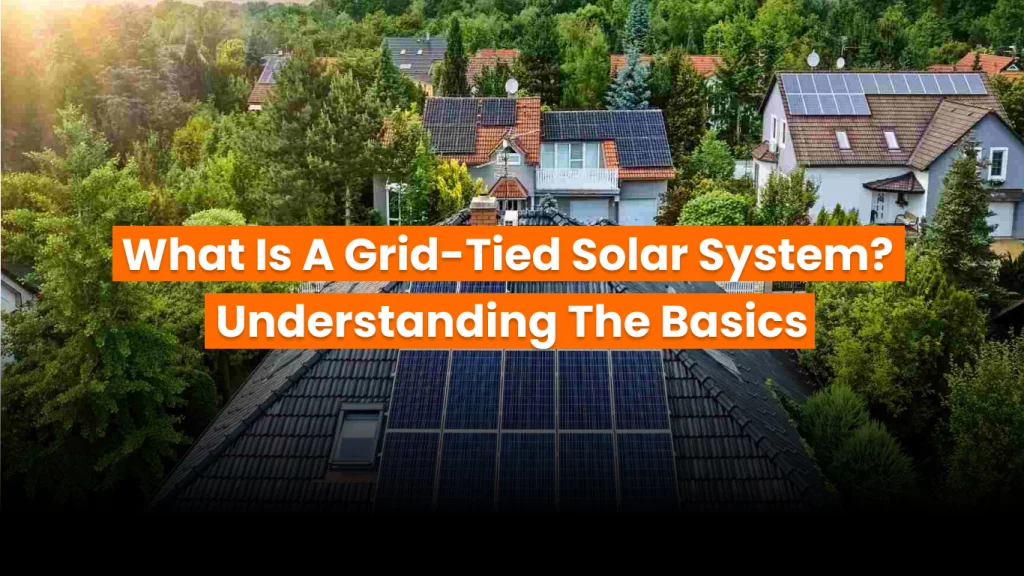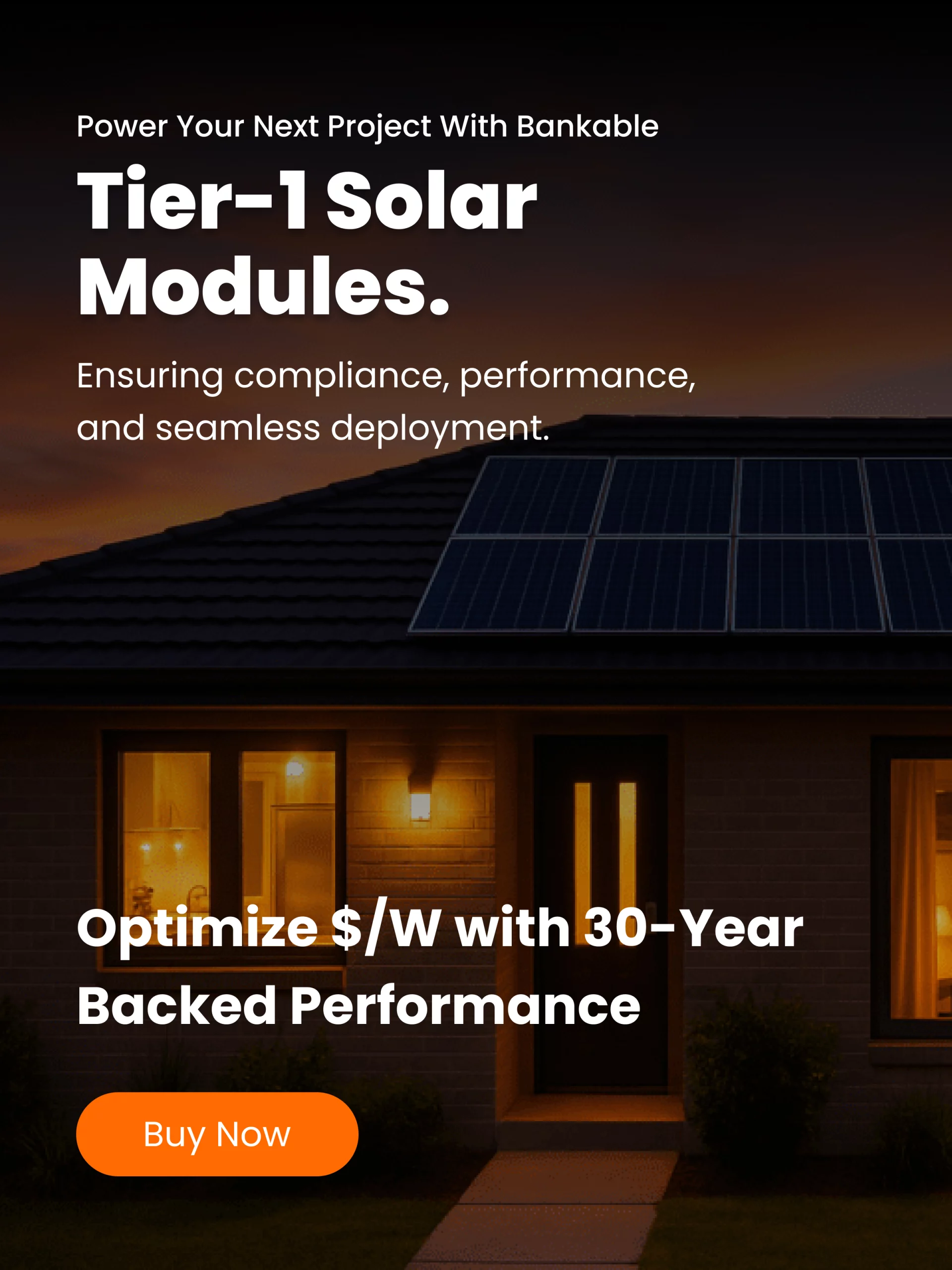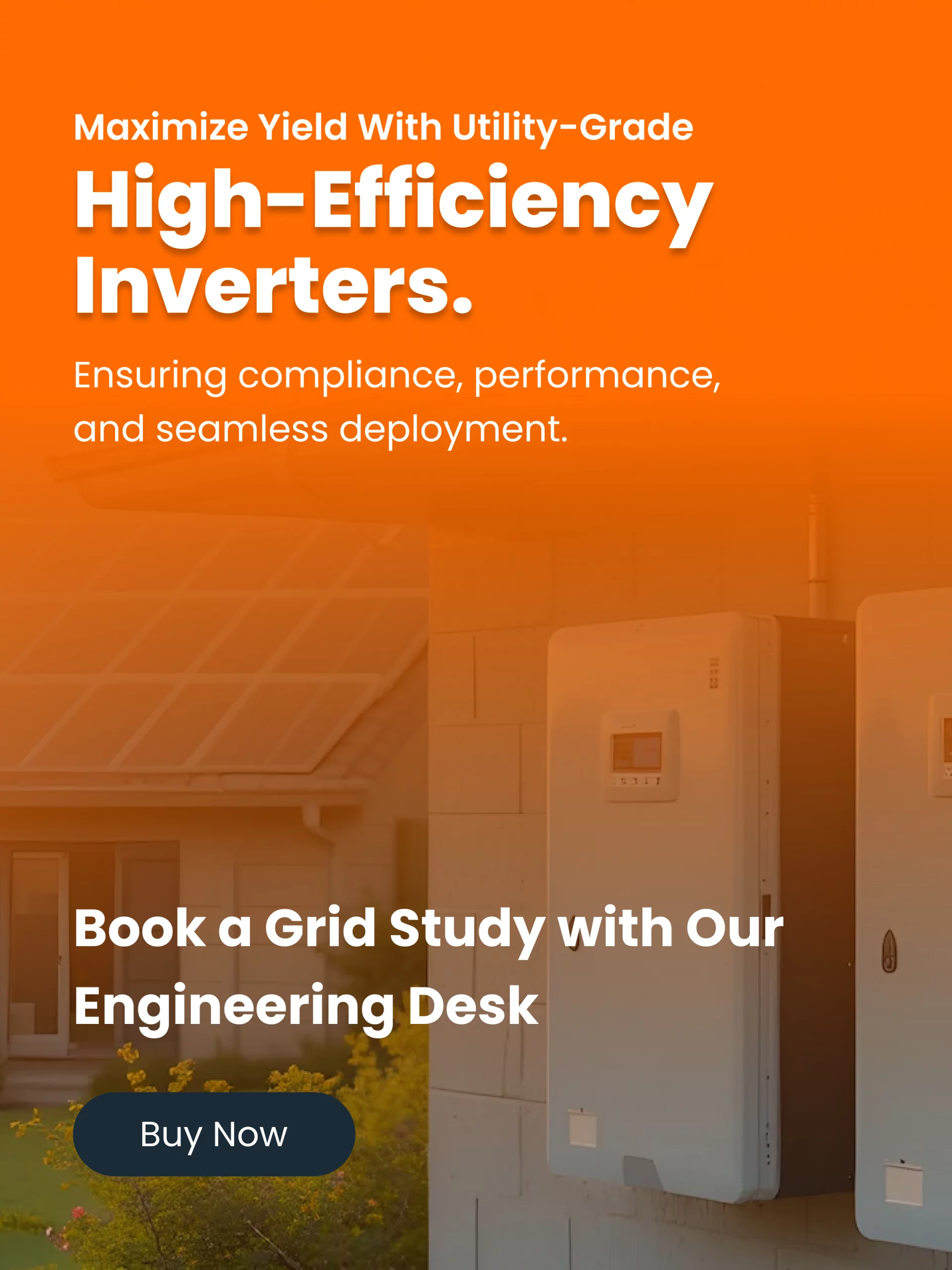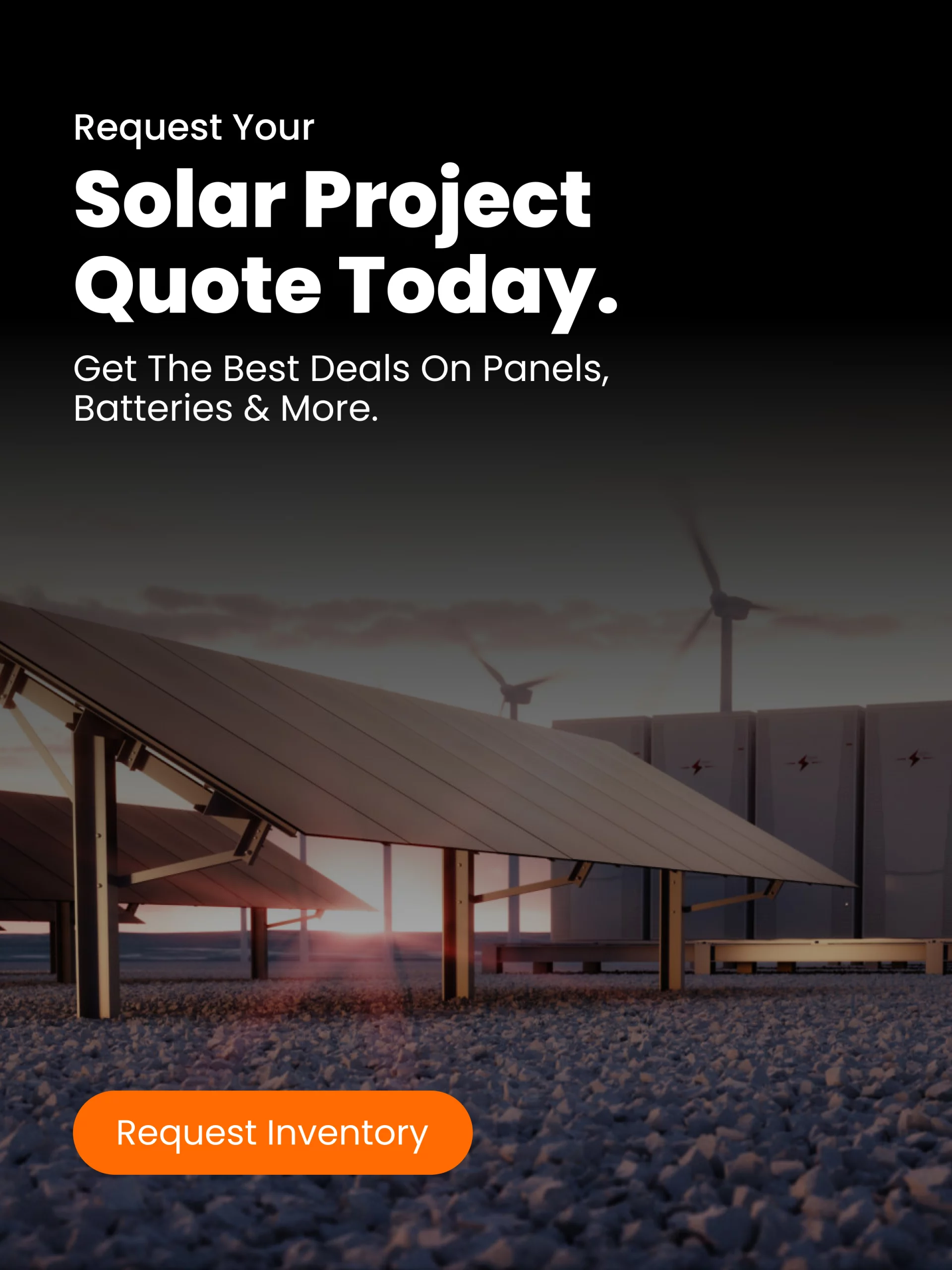A grid-tied solar system, sometimes called an on-grid or grid-interactive system, is the most common residential solar setup in the U.S. It connects your solar panels to both your home and the local utility grid. Electricity generated by the panels powers your home in real-time, and any excess energy is sent back to the grid, earning you credits under net metering. When solar production drops (like at night), your home simply draws power from the grid as needed.
Unlike off-grid systems, grid-tied systems don’t require battery storage, which makes them more affordable, straightforward to install, and generally easier to maintain.
How grid-tied systems work: Simple but smart
Here’s the workflow: solar panels convert sunlight into direct current (DC). A grid-tied inverter (e.g., string inverter or microinverter) converts that DC to alternating current (AC), matching the voltage, phase, and frequency of the utility grid. Excess energy is exported, and when solar isn’t enough, electricity is imported seamlessly.
Net metering programs allow this two-way flow: you earn credits for surplus power and use those credits when you’re drawing electricity later. That can dramatically lower or eliminate your electric bill over time.
Why many homeowners choose grid-tied solar
Grid-tied systems offer several key benefits:
- cost-effective installation: without batteries, system complexity and hardware costs go down. Typical packages include panels, inverter, mounting, and labor.
- flexibility and reliability: solar power lowers grid dependency, but the grid remains your fallback when solar falls short.
- net metering savings: excess energy earns utility credits, offsetting electricity purchases later.
However, these systems won’t provide power during a blackout unless paired with batteries and backup inverters.
2025 pricing overview: costs before and after incentives
According to EcoFlow’s 2025 cost guide, grid-tied systems in the U.S. now range from $8,000 to $26,000 before incentives, depending on system size. After applying the federal Residential Clean Energy Credit (30%), those figures shrink to roughly:
- 3 kW system: $8,000–10,000 before, $5,600–7,000 after credit
- 6 kW system: $15,000–18,000 before, $10,500–12,600 after credit
- 10 kW system: $22,000–26,000 before, $15,400–18,200 after credit.
Hoymiles reports similar ranges, with small systems (~4 kW) costing around $9,100 after tax credit, while larger systems up to about 16 kW reach $29,000 before incentives. Other industry averages for grid-tied systems fall between $15,000–$24,000 before incentives, equating to $10,500–17,500 after credit.
What drives your cost: Key components and choices
The main factors that influence pricing include:
- system size: bigger arrays cost more (panels, inverter capacity, labor)
- panel type: monocrystalline panels cost more but offer higher efficiency
- inverter selection: string inverters vs. microinverters,microinverters cost more per watt but improve performance if panels face shade or have variable orientation
- location and labor: regional permit fees, labor rates, and roof complexity all matter
- design extras: monitoring systems, trim options, future-proofing wiring for battery add-ons
Labor, mounting, and permitting typically make up 20–25% of the cost, panels about 30–35%, and inverters around 10–15%.
Real-world example: size vs. savings
Let’s say you want a 6 kW grid-tied solar system:
- upfront cost: around $15,000–$18,000
- after 30% federal tax credit: around $10,500–$12,600
- assuming good net metering policies, you may offset most of your electricity bills over time
This size is typical for a 2,000 sq ft home with average energy use, enough to significantly reduce grid dependency.
Benefits and limitations: An honest overview
Pros
- lowest cost per watt compared with hybrid or off-grid alternatives
- net metering credits reduce your net cost over time
- generally fewer permits and simpler design
- clean, silent renewable energy with no onsite emissions
Cons
- no backup power during blackouts (unless you add battery capacity)
- net metering rewards vary by utility and state,not universal
- minimal energy storage means solar power is mostly self-consumption only
Future readiness: Upgrading and smart integration
Starting with a grid-tied system doesn’t lock you in. You can later add hybrid inverters and batteries to evolve into a hybrid system. Some inverters, even Hoymiles models,support this upgrade path and offer time-of-use (TOU) controls, letting you optimize energy use based on solar production and utility rates.
Smart monitoring tools and export-limiting hardware can also help manage how and when you feed energy back into the grid, especially under stricter export caps.
Summary: Is a grid-tied system right for you?
If you’re looking for an affordable solar setup with solid returns, and you don’t require backup power during outages,a grid-tied solar system offers an efficient path to clean energy. In 2025, prices range roughly from $5,600 to $18,200 after federal incentives, making solar accessible for many homeowners.
The key benefits: lower upfront costs, net metering savings, simple installation, and flexibility to expand later. Limitations include no battery backup and reliance on local utility rules, but the system still offers excellent value for carbon-conscious and cost-conscious consumers alike.
Final thoughts
Grid-tied solar systems represent the sweet spot between affordability, simplicity, and environmental impact. You generate clean energy, reduce utility bills via net metering, and keep your grid backup intact. With federal incentives still available through 2032, 2025 offers a prime window to invest in solar.
As you plan your renewable energy transition, consider your home’s power needs, net metering policies in your area, and whether future upgrades like battery storage may be helpful. With the right design and installation, a grid-tied system can power your home for decades while saving money and emissions along the way.




